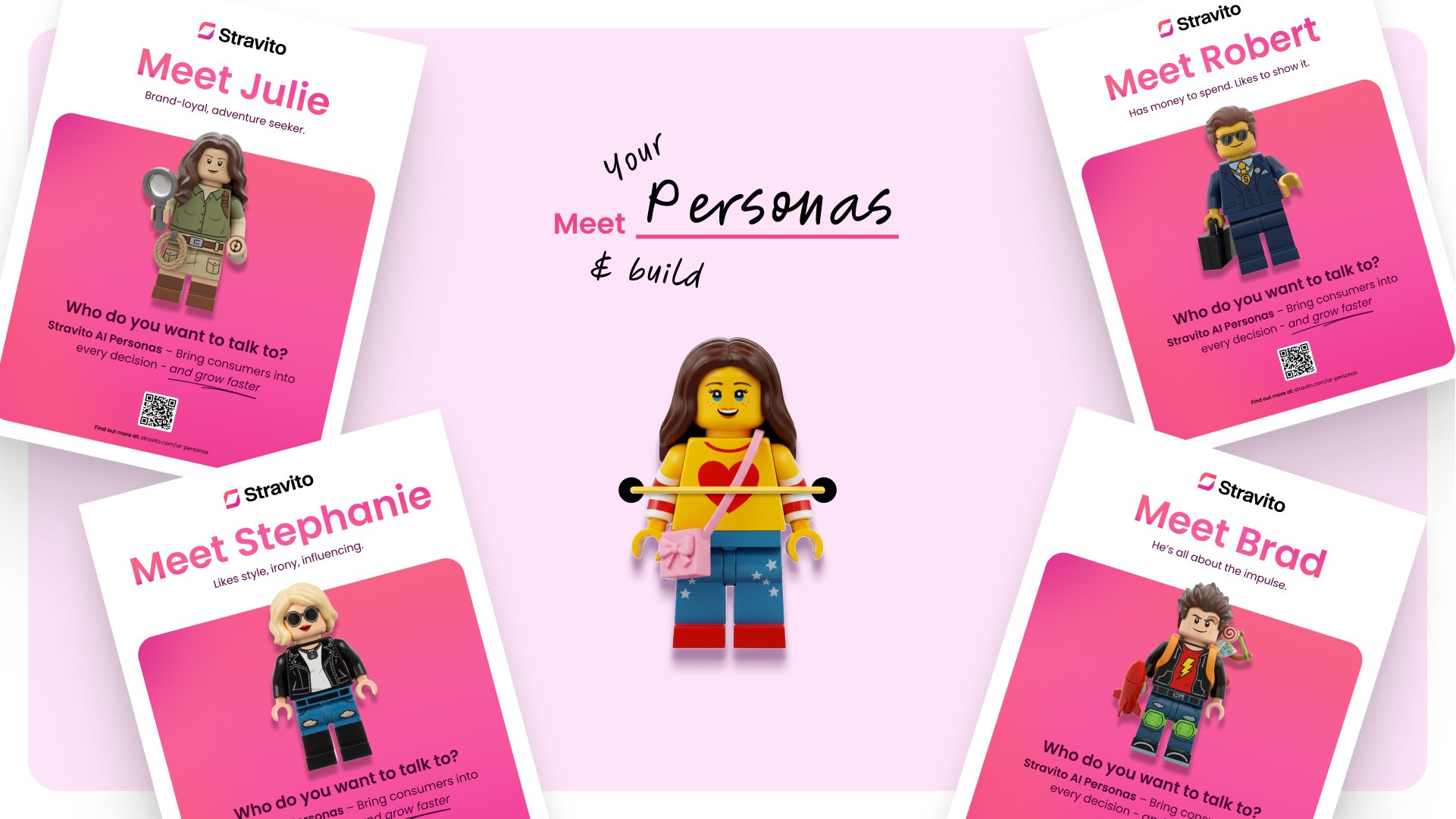As artificial intelligence changes how we handle user research data, repositories are evolving into something smarter, faster, and more intuitive.
Search is just the starting point, not the end game anymore.
We first explored this shift in an earlier version of this article. But a lot has changed since then.
Today’s AI-powered tools don't just help you find files. They help you connect insights, surface patterns, and deliver answers that drive real decisions.
If you're working with qualitative data, conducting user interviews, or trying to make your research more accessible across teams, this update is for you.
We'll walk through how AI is transforming the UX research process and what it means for modern research teams.
Short on time? Here’s the quick version...
TL;DR: The main takeaways
- AI UX research is changing how teams store, search, and share insights
- Manual tagging is being replaced by AI-powered analysis and smart discovery
- UX researchers can now surface patterns across qualitative and quantitative data
- Insight repositories are evolving into tools for synthesis, not just storage
These shifts aren’t just technical upgrades. They’re reshaping how we think about discovery in the research process.
Let’s start with where it all begins: search.
The shift from search to discovery
When people think of AI tools in UX research, they often focus on search. Ask a question, get an answer. That’s helpful, but it’s only part of the story.
The real shift is from search to discovery.
Think about browsing a library. You go in for one book but end up finding three others you didn’t expect. That’s discovery. And today’s AI-powered tools bring that same experience into your research repository.
AI doesn’t just return results. It understands meaning, surfaces related topics, and reveals insights you didn’t know to look for.
This is a game changer for UX researchers working across interviews, user feedback, and usability tests.
Instead of hunting for a specific slide deck or keyword, teams can:
- Explore patterns across raw data
- Uncover emerging themes in qualitative research
- Get smart recommendations based on user interactions
In fact, a study of 200 UX professionals revealed that improving research visibility remains one of the biggest challenges across large organizations.
That’s where AI-powered discovery earns its place. It takes your insight repository from passive storage to active synthesis.
With discovery handled, the next challenge is organization, so let’s talk about tagging and why AI may finally make it optional.
Why tagging is dead (and what replaced it)
Manual tagging used to be the go-to method for organizing research findings.
UX researchers would create custom tags to track patterns, themes, or user preferences. In theory, this made it easier to analyze qualitative data across interviews, usability tests, and research reports.
But in practice? Tagging gets messy fast.
Everyone uses different labels. Tags overlap. Teams don’t align. And suddenly, your well-organized repository turns into a cluttered mess of duplicate categories and inconsistent metadata.
AI changes that.
Instead of relying on manual input, AI-powered tools can now:
- Automatically classify research data
- Identify recurring topics or sentiment trends
- Group similar user feedback or behavioral insights
- Connect insights across multiple research projects
This doesn’t just save time. It takes the most time-consuming part of the process off your plate, so you can spend less effort on manual tagging and more on drawing out the insights that really matter.
Example: How AI simplifies research synthesis
Imagine you’ve just wrapped up a dozen user interviews. Traditionally, you’d need to tag each insight manually, align themes, and group findings. A time-consuming process.
With AI-powered tools, you can take a different approach.
You can prompt the system to:
- analyze the transcripts,
- identify recurring patterns,
- and generate summaries tailored to user needs or behaviors.
This kind of automation gives UX researchers more space to focus on high-value tasks like interpreting results, sharing insights, and shaping strategy.
And tagging is just the beginning. AI is also reshaping how we manage and maintain our entire research repositories. Let’s explore what that looks like in practice.
From knowledge chaos to clarity
If we're being honest, most research repositories are overwhelming. They’re packed with outdated files, duplicate reports, and unlabeled documents that no one wants to clean up.
That’s not a tech issue. It’s a time issue.
For busy UX researchers like you, there’s rarely space in the schedule to reorganize hundreds of research tasks, maintain file structures, or manage complex taxonomies. But skipping that work comes at a cost. And this is especially true for large, decentralized teams trying to scale insights.
Enter AI...
AI-powered features now help teams:
- Identify and remove redundant documents
- Flag outdated research reports
- Group findings by relevance or topic
- Surface hidden insights in underused research data
Instead of digging through disorganized folders, UX research teams can rely on AI tools to streamline the cleanup process. That means fewer repetitive tasks and more focus on high-value work.
As UX researcher Emily DiLeo once described it, knowledge management can feel “glacial and imperceptible” in day-to-day work.
The changes are slow, but the impact is massive.
AI accelerates that shift. It brings clarity to chaos, helping teams find what matters and let go of what doesn’t.
So what does this all mean for your research practice? Let's look at how AI is changing the day-to-day work of UX researchers and insight teams.

Even the best research doesn't have impact if it's not discovered ...
See how Stravito can help
How AI supports (not replaces) human researchers
There's been plenty of hype about AI replacing user researchers. But in reality, most AI UX research tools are designed to support, not replace, human expertise.
The best tools don’t aim to take over. They help researchers:
- Automate tedious tasks like tagging, summarizing, and organizing
- Analyze large volumes of qualitative and quantitative data
- Generate user personas based on real research findings
- Translate raw data into user insights that teams can act on
Think of it like this: AI handles the heavy lifting so researchers can spend more time doing what they do best. That means asking the right questions, interpreting nuance, and sharing insights that shape strategy.
This kind of support is especially valuable when working with large datasets, complex research methods, or fast-moving projects. It also helps UX teams scale without burning out or sacrificing quality.
From synthesizing interviews to surfacing trends in customer feedback, AI-powered research tools give teams a clearer view of user behavior, sentiment, and preferences. And they do it in a way that respects the role of human judgment.
Next, we’ll tie it all together with a few practical takeaways and show how insight repositories are becoming more than just places to store research.
From repository to research engine
Insight repositories have come a long way.
What used to be static storage systems are now dynamic tools that actively support the UX research process. Thanks to AI-powered features, teams can work faster, spot patterns sooner, and share findings more effectively.
Instead of spending time on manual tasks like tagging or sorting, researchers can focus on high-impact work, like interpreting user behavior and guiding product decisions.
AI tools don’t replace researchers. They make it easier to:
- Organize and synthesize large volumes of research data
- Uncover trends in qualitative and quantitative insights
- Share research findings across global teams
- Automate repetitive tasks like tagging and report generation
- Support faster, more confident decision-making
The result is a research engine that helps insights flow more freely and reach the people who need them.
Ready to see it in action? Request a demo and discover how Stravito makes AI work for insights teams.
Frequently asked questions
What is AI UX research?
AI UX research refers to the use of artificial intelligence to support tasks across the UX research process. This includes everything from automating data collection and tagging to analyzing qualitative data and generating user insights.
AI tools help UX researchers scale their work, streamline repetitive tasks, and uncover patterns in both qualitative and quantitative research.
Can AI tools replace user researchers?
No. AI tools are designed to support, not replace, human researchers. While AI can analyze large volumes of research data, summarize findings, and even conduct sentiment analysis, it still relies on human expertise to ask the right questions, interpret nuance, and apply context.
The best results come from combining AI-powered analysis with real-world research methods and human insight.
How can AI help with analyzing user feedback and interviews?
AI can scan and synthesize user feedback from multiple sources, including user interviews, usability tests, and open-text survey responses. This reduces the manual effort involved in coding raw data and allows researchers to surface valuable insights more quickly.
AI tools can also highlight recurring user preferences, pain points, and behavior patterns across your research repository.
What types of research tasks can AI automate?
AI can automate many of the repetitive and time-consuming tasks in UX research, helping teams move faster without sacrificing quality. These automations reduce manual effort and free up researchers to focus on strategy and storytelling.
Here are a few examples of what AI tools can handle:
- Tagging and organizing user research data
- Generating summaries of research reports
- Grouping related data points for faster synthesis
- Running sentiment analysis across user interviews and feedback
- Creating user personas and synthetic users for early-stage testing
- Supporting report generation with AI-powered features
What should I look for in AI UX research tools?
The best AI UX research tools support your workflow, not disrupt it. If you're evaluating platforms, here’s a helpful guide to the best UX research repository tools that compares key features and fit for enterprise teams.
Key features to look for include:
- AI-powered search and smart discovery
- Compatibility with both qualitative and quantitative research methods
- Seamless integration with your existing research repository
- Automated tagging, sentiment analysis, and report generation
- Secure handling of user data and access controls
- Minimal setup and no need for deep technical expertise

-1.jpg)


